Last updated on
Discover the simple yet effective ways to keep your upholstered kitchen chairs spotless and fresh with our easy-to-follow cleaning guide.
Upholstered kitchen chairs are a great addition to any home. They not only provide comfort but also add a touch of elegance to your dining area.
However, maintaining their beauty can be quite challenging, especially when it comes to cleaning them. From accidental spills to food stains, upholstered chairs can easily get dirty and stained over time.
But don’t worry! In this article, we will share some tips and tricks on how to clean your upholstered kitchen chairs and keep them looking as good as new for years to come. So let’s dive in!
What's Inside
Types of Upholstery Materials

Different fabrics require different cleaning methods and products, so it’s essential to identify the fabric type first. Common types of upholstery materials include cotton, linen, wool, leather, microfiber and synthetic blends.
Cotton is a natural fiber that’s durable and easy to clean but can shrink if not treated properly. Linen has a luxurious look but requires gentle care as it wrinkles easily.
Wool is another natural fiber that’s warm and cozy but can be challenging to clean due to its tendency to absorb moisture.
Leather adds sophistication with its smooth texture; however, it needs special attention when cleaning as some cleaners may damage or discolor the surface. Microfiber offers excellent durability while being resistant against stains; however certain chemicals may cause damage over time.
Synthetic blends are made from various fibers such as polyester or nylon mixed with other materials like cotton or wool for added strength and durability while still maintaining an attractive appearance.
Assess the Fabric Type

Different fabrics require different cleaning methods and products. Some materials are more delicate than others and may get damaged if not cleaned properly.
To assess the fabric type, check for any tags or labels attached to your chairs that indicate what kind of material they’re made from. These labels usually have codes that represent specific types of fabrics such as cotton, polyester, silk or wool.
If there are no tags available on your chair’s upholstery then try identifying its texture by touching it with clean hands. If it feels rough like canvas then chances are high that it is made up of natural fibers like cotton or linen whereas smooth textures might be synthetic fibers such as nylon or polyester.
Gather Cleaning Supplies
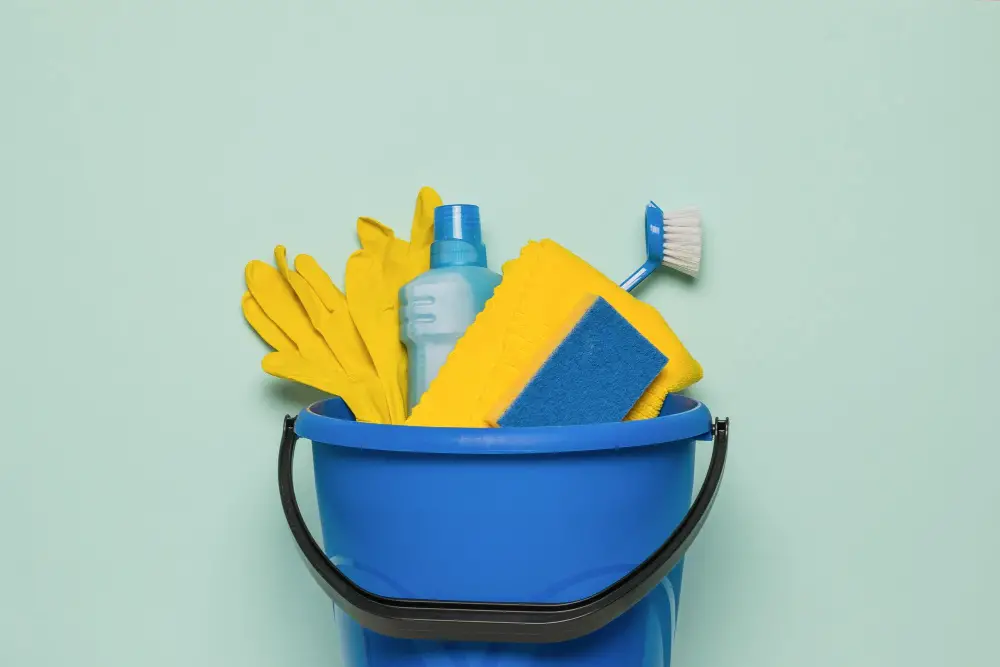
Having everything on hand will make the process more efficient and save you time in the long run. Here are some of the items that you’ll need:
- Vacuum cleaner with upholstery attachment
- Soft-bristled brush or sponge
- Clean white cloth or paper towels
- Mild dish soap or fabric cleaner solution (check manufacturer’s instructions)
- Bucket of warm water
- Steam Cleaner (optional)
Regular Vacuuming
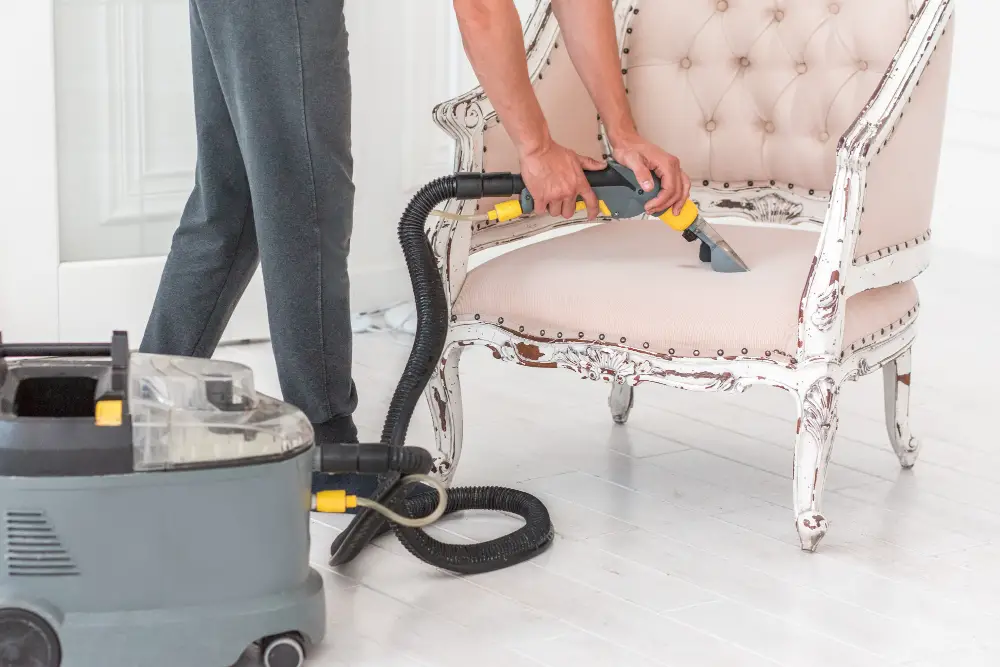
This will help remove any loose dirt, dust, and debris that may have accumulated on the surface of the fabric. Use a soft-bristled brush attachment to avoid damaging the upholstery.
Vacuuming should be done at least once a week or more frequently if you have pets or small children who tend to spill food and drinks on the chairs. By doing so, you can prevent dirt from settling deep into the fibers of your upholstery which can make it harder to clean later.
Regular vacuuming also helps maintain good indoor air quality by removing allergens such as pet dander and dust mites that may trigger allergies or asthma attacks.
Spot Test for Colorfastness
This step is crucial as some fabrics may bleed or fade when exposed to certain cleaning solutions. To perform a spot test, choose an inconspicuous area of the chair and apply a small amount of the cleaning solution using a clean cloth or sponge.
Gently rub the fabric in circular motions and then blot with another clean cloth. Check if any color has transferred onto the cloth or if there are any visible changes in texture or appearance on the upholstery.
If there are no adverse effects after 24 hours, proceed with caution by applying only small amounts of cleaner at first while monitoring for any negative reactions from your upholstery material.
Treating Spills and Stains

Whether it’s a glass of red wine or a plate of spaghetti, accidents happen. But don’t panic! With the right approach, you can easily treat spills and stains on your upholstered chairs.
The first step is to act quickly. The longer you wait, the harder it will be to remove the stain completely.
Use a clean cloth or paper towel to blot up as much liquid as possible without rubbing or spreading the stain further.
Next, assess what type of spill has occurred and choose an appropriate cleaning solution accordingly. For example:
- Water-based stains: Blot with cold water.
- Grease-based stains: Sprinkle baking soda over them for 15 minutes before vacuuming.
- Wine/fruit juice/coffee/tea/chocolate/milk: Mix one tablespoon white vinegar with two-thirds cup rubbing alcohol in a spray bottle; apply this mixture onto stained areas using another clean cloth until they disappear.
Remember always spot test any cleaning solution on an inconspicuous area before applying it all over your chair upholstery!
Apply Fabric Cleaning Solution
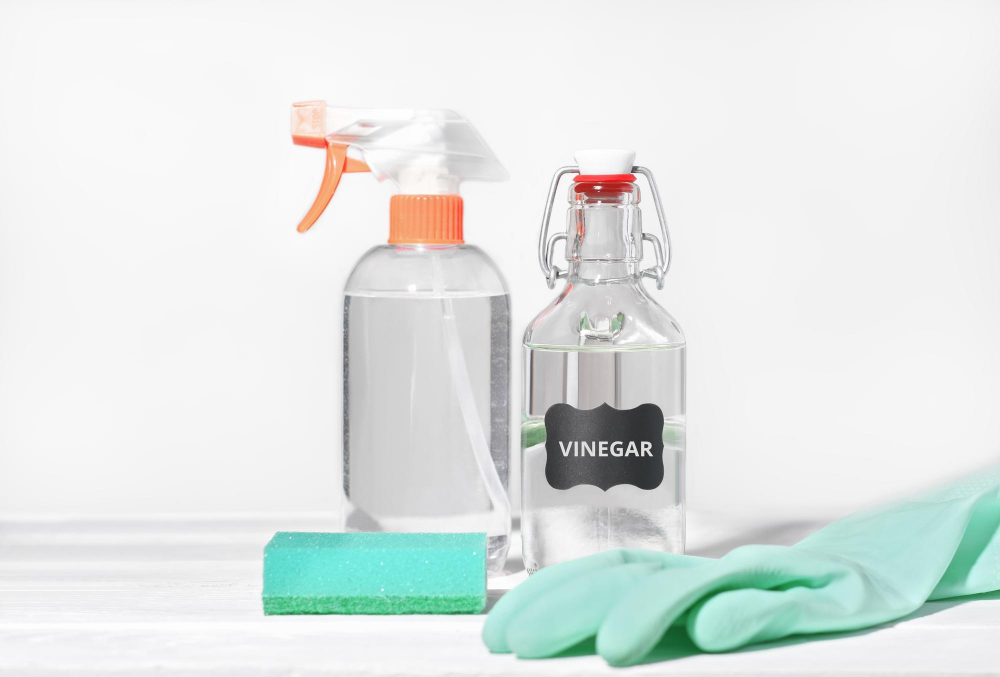
You can either purchase a commercial upholstery cleaner or make your own by mixing equal parts of water and white vinegar in a spray bottle. Spray the solution onto the stain, making sure not to oversaturate it.
Using a soft-bristled brush or sponge, gently work in circular motions from outside towards inside of the stain until it disappears. Avoid rubbing too hard as this may damage delicate fabrics like silk or velvet.
Afterward, use clean water and dampen another cloth then blot away any excess cleaning solution residue on your chair’s surface. Allow enough time for drying before using them again.
Steam Clean Option
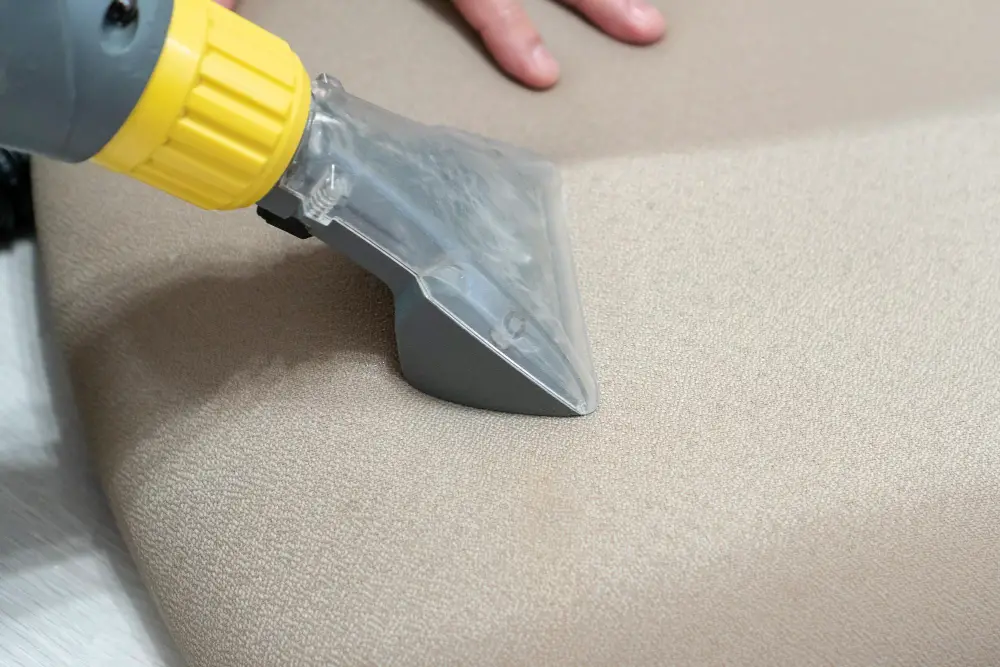
Steam cleaners use high-temperature water vapor to penetrate the fabric fibers and loosen up any dirt or stains. This method is particularly effective in removing tough stains like grease, oil, or wine spills.
To steam clean your upholstered chairs, start by vacuuming them thoroughly to remove any loose debris. Then fill the steamer with water according to the manufacturer’s instructions and turn it on.
Once it has heated up sufficiently, hold the nozzle about 6 inches away from the chair’s surface and move it slowly across all areas of upholstery.
Be careful not to over-wet any one area as this could cause damage or discoloration of some fabrics; always follow manufacturer guidelines when using a steam cleaner on upholstery materials.
Opt for a Traditional Soapy Method
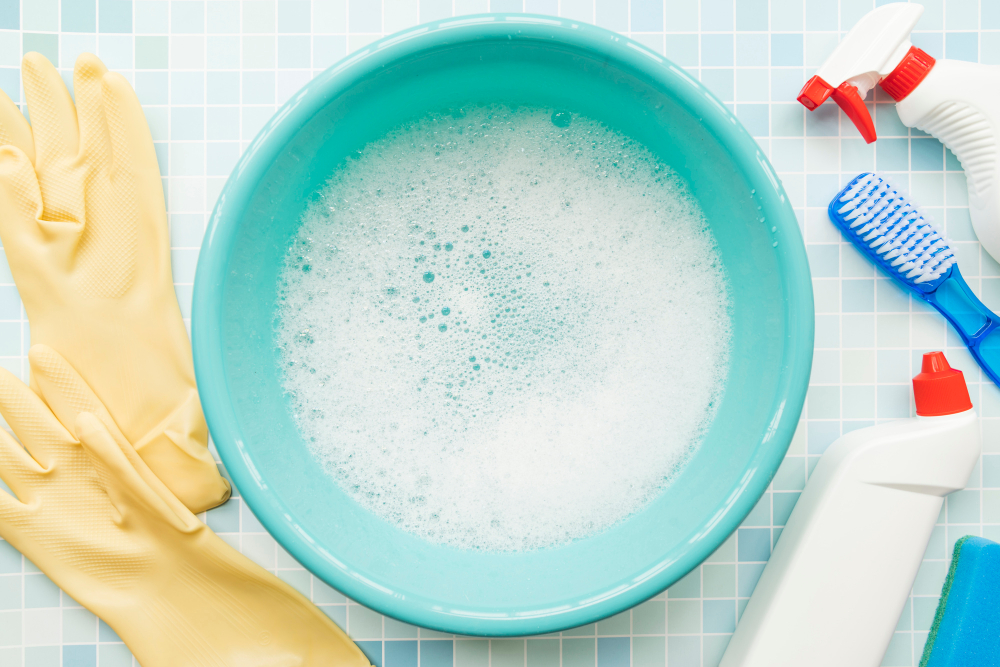
This method involves using a mild soap solution and warm water to clean the fabric. Start by mixing some dishwashing liquid or laundry detergent with warm water in a bucket or bowl.
Next, dip a soft-bristled brush into the soapy solution and gently scrub the upholstery in circular motions. Be careful not to soak the fabric too much as this can cause damage over time.
Once you have cleaned all areas of your chair, use clean water and another cloth or sponge to rinse off any remaining soap residue thoroughly. Let it air dry completely before using it again.
The traditional soapy method is an effective way of removing dirt and stains from most types of upholstery fabrics without causing any harm if done correctly.
Invest in a Commercial Cleaning Product

These products are specifically designed to remove tough stains and dirt from upholstery fabrics. However, it’s essential to choose the right product for your chair’s fabric type and follow the manufacturer’s instructions carefully.
Before using any commercial cleaner on your upholstered kitchen chairs, make sure to do a spot test first. Apply a small amount of the solution on an inconspicuous area of the chair and wait for at least 24 hours before proceeding with full-scale cleaning.
When selecting a commercial cleaner, look for one that is suitable for your specific fabric type (e.g., leather or microfiber). Also, consider its effectiveness against different types of stains such as oil-based spills or food residues.
Remember that some cleaners can cause discoloration or damage certain fabrics if not used correctly. So always read labels carefully before use and avoid using harsh chemicals whenever possible.
Dry the Upholstery
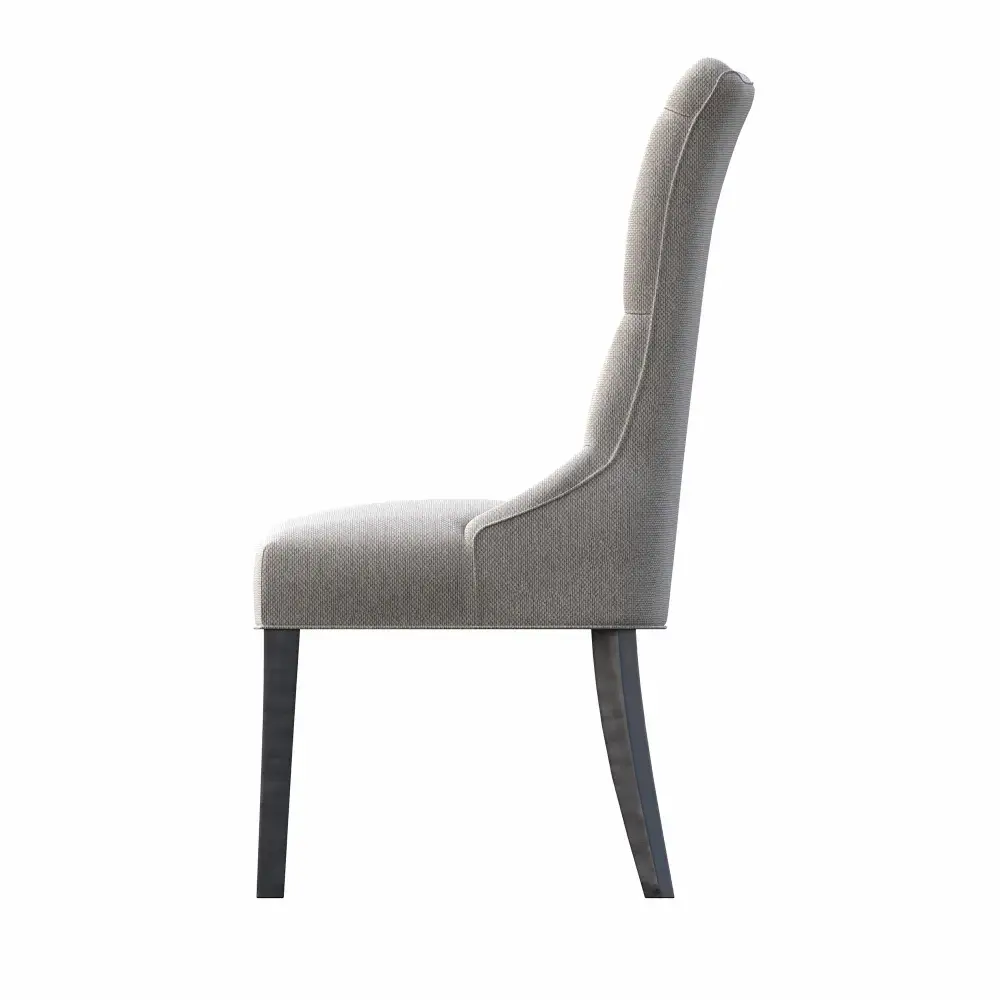
Dampness can lead to mold and mildew growth, which can damage the fabric and cause an unpleasant odor. To dry your upholstered kitchen chairs, use a clean towel or cloth to absorb as much moisture as possible.
Then leave them in a well-ventilated area for several hours until they are completely dry.
Avoid using heat sources such as hairdryers or heaters since high temperatures may shrink or damage the fabric fibers. Also, do not sit on damp chairs since this will only prolong their drying time and could result in further stains.
If you need your upholstered kitchen chairs dried quickly after cleaning them, consider using fans or opening windows to increase airflow around them. This will help speed up the drying process while ensuring that no moisture remains trapped inside.
Deodorize the Chairs
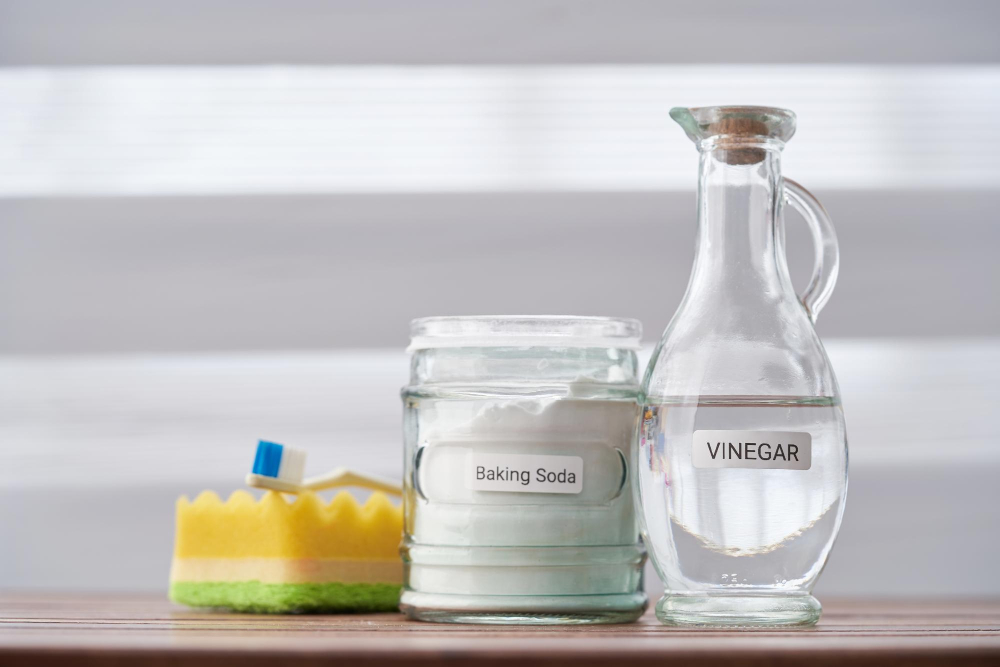
Food spills and stains can leave behind a musty smell that lingers even after cleaning. To get rid of these smells, you can use baking soda or white vinegar.
Baking soda is an excellent natural deodorizer that absorbs bad smells from the fabric fibers. Sprinkle some baking soda on the chair’s surface and let it sit for at least 30 minutes before vacuuming it off thoroughly.
White vinegar is another effective option for removing odors from upholstery fabrics. Mix equal parts of water and white vinegar in a spray bottle, then lightly mist the solution over your chairs’ surfaces until they are damp but not soaking wet.
Allow them to air dry completely before using them again.
Clean Non-Fabric Parts
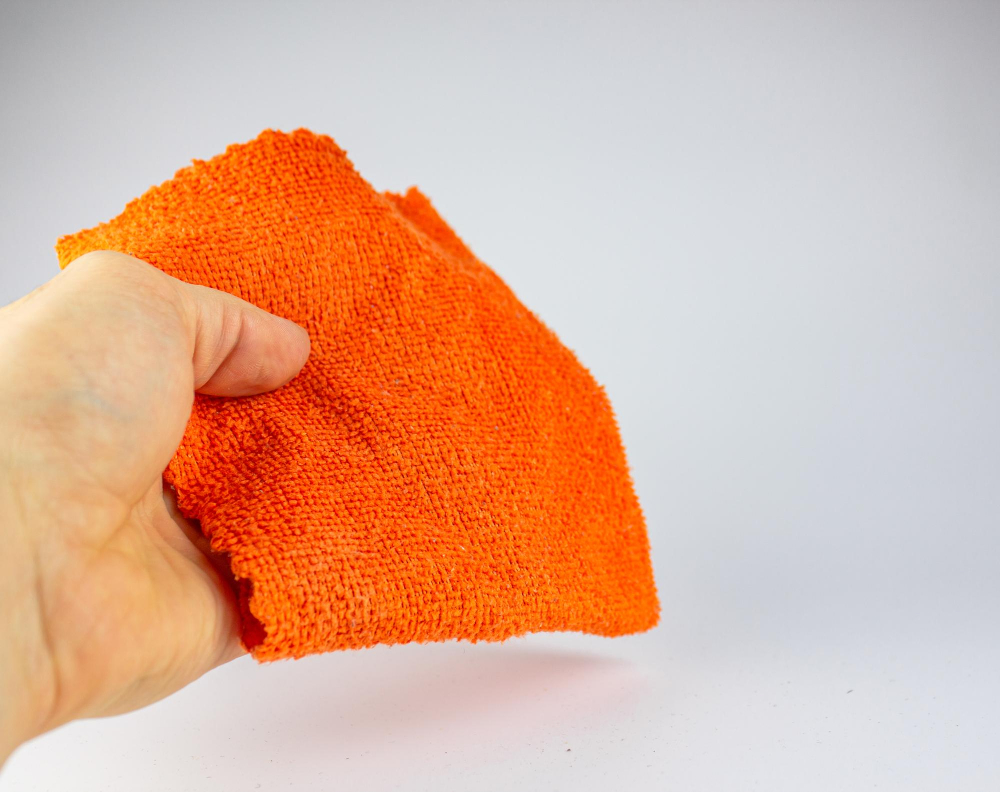
The legs, arms, and frame may be made from wood or metal and require a different cleaning approach.
For wooden parts: Use a soft cloth dampened with water to wipe down the surface. Avoid using harsh chemicals as they can damage the finish on your furniture.
For metal parts: Wipe them down with a clean cloth dipped in warm soapy water. Rinse thoroughly and dry immediately to prevent rusting.
Post-Cleaning Care Tips

Here are a few tips:
- Allow the upholstery to dry completely before using the chairs again.
- Avoid sitting on damp or wet upholstery as this can cause mold growth.
- Fluff and reshape any cushions that may have lost their shape during cleaning.
- Apply a fabric protector spray after cleaning to prevent future stains from setting in.
Prevent Future Stains

One of the easiest ways is to use slipcovers or chair covers. They not only protect your chairs from spills and stains but also add a decorative touch.
Another way is to establish some ground rules for using the dining area. For instance, no shoes on the chairs or no eating while standing near them can go a long way in keeping them clean.
You can also consider applying fabric protectors like Scotchgard that create an invisible barrier against liquid spills and dirt particles.
Lastly, regular maintenance is key! Vacuuming your upholstered kitchen chairs once every week will help remove any loose dirt or debris before they settle into the fibers of the upholstery material.
Regular Maintenance Schedule
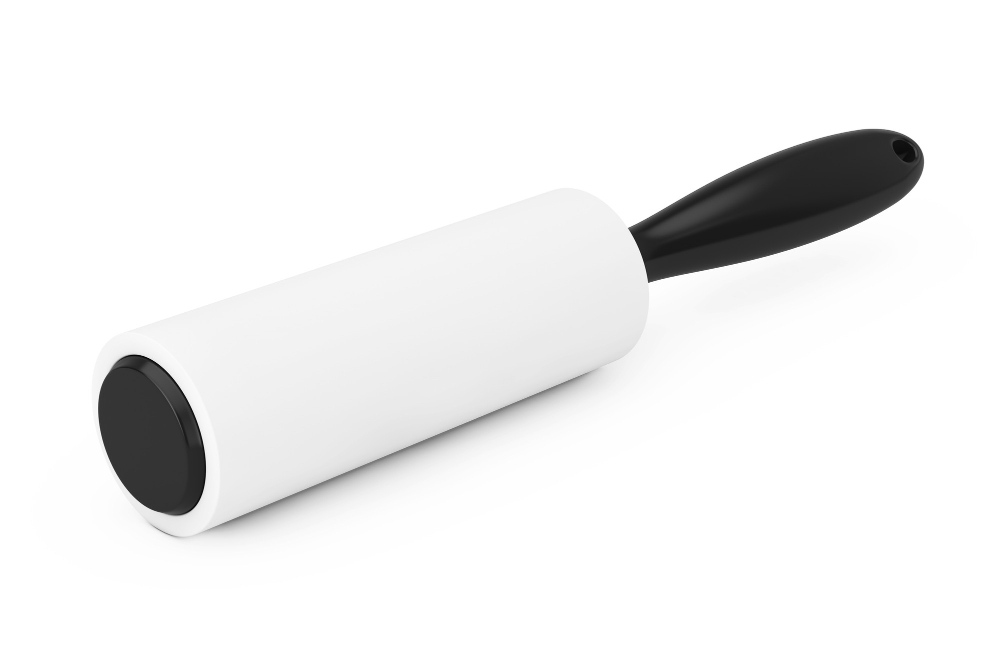
This will help prevent dirt and grime from building up on the fabric, making cleaning much easier in the long run.
One of the easiest ways to maintain your chairs is by vacuuming them regularly. Use an upholstery attachment or a soft brush attachment to remove any loose dirt and dust from all sides of the chair.
You can also use a lint roller or sticky tape to pick up any pet hair or debris that may be stuck on the fabric.
Another important aspect of maintaining upholstered kitchen chairs is avoiding direct sunlight exposure as it can cause fading over time. If possible, position your furniture away from windows where they won’t be exposed directly.
Stain Resistant Fabrics
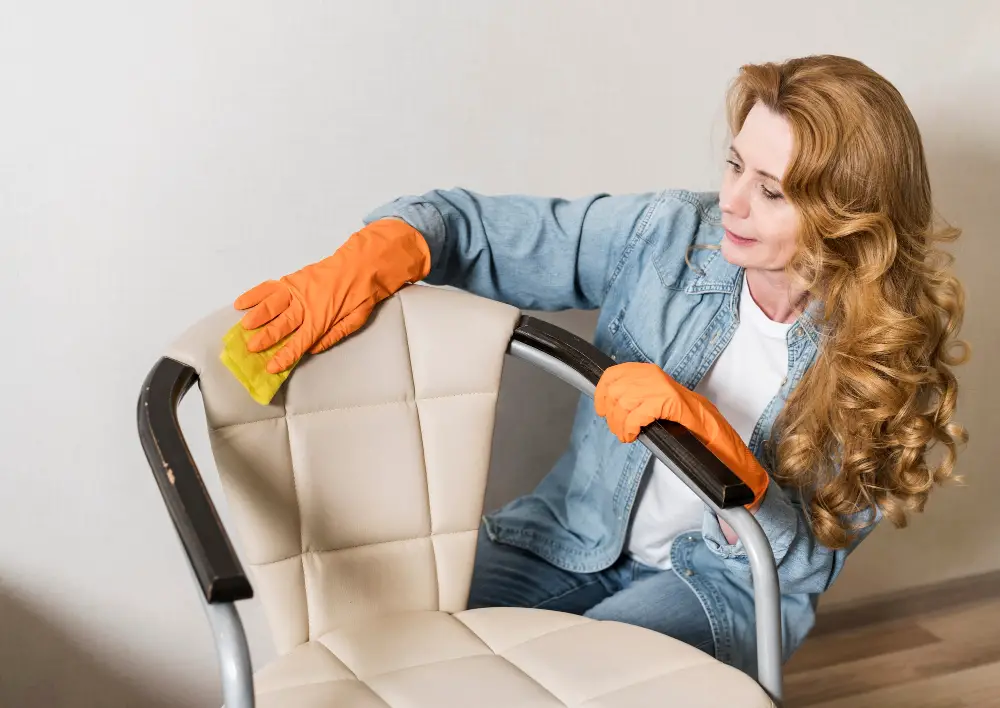
These materials are designed to repel liquids and prevent stains from setting in. They are perfect for families with young children or pets who tend to spill food or drinks on the chairs.
Some popular stain-resistant fabrics include Crypton, Sunbrella, and Ultrasuede. These materials not only resist stains but also repel odors and bacteria growth.
However, keep in mind that even though these fabrics are resistant to spills and stains, they still require regular cleaning to maintain their appearance over time. So make sure you follow the manufacturer’s instructions carefully when cleaning them.
Professional Cleaning

Professional upholstery cleaners have specialized equipment and expertise that can help remove even the toughest stains from your chairs. They also know how to handle delicate fabrics without causing any damage.
Before hiring a professional cleaner, make sure they are licensed and insured. You should also ask for references or read online reviews from previous customers to ensure their quality of work is up-to-par.
While professional cleaning services may cost more than doing it yourself, they are often worth it in terms of time saved and results achieved. Plus, having clean furniture will not only improve its appearance but also extend its lifespan.
Unsuitable Cleaning Products
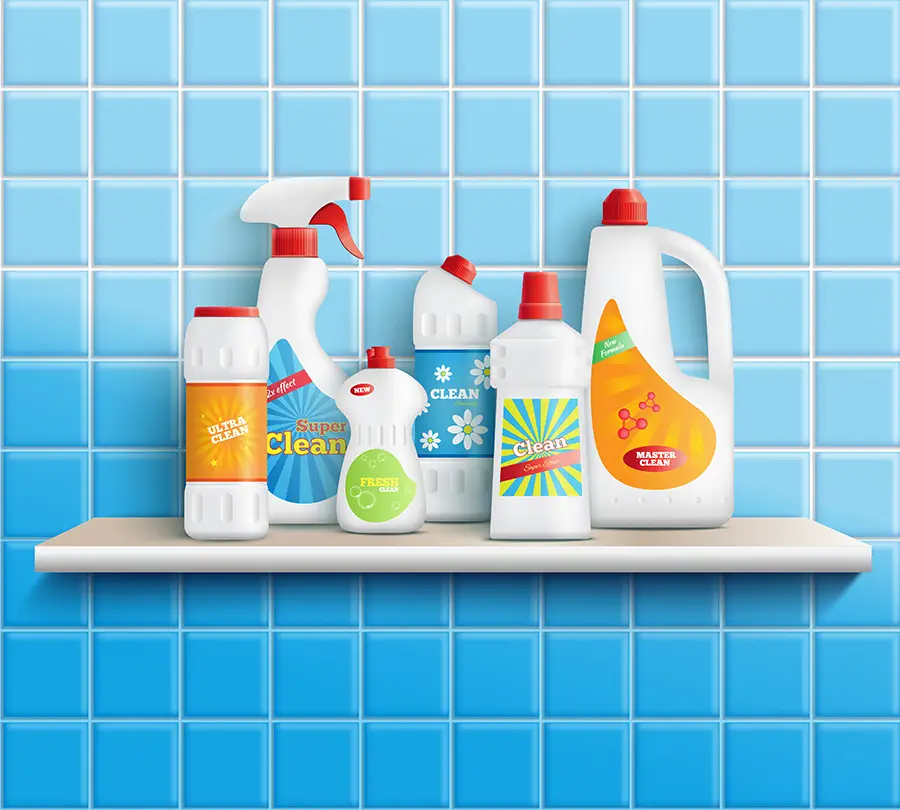
Some products can cause discoloration, shrinkage, or even damage the fabric. Avoid using bleach-based cleaners as they can weaken the fibers and cause yellowing of light-colored fabrics.
Similarly, avoid using abrasive cleaners such as baking soda or vinegar on delicate fabrics like silk or velvet.
Also, be cautious when using water-based cleaning solutions on leather upholstery as it may lead to cracking and peeling of the material over time.
To ensure you don’t ruin your beautiful upholstered chairs while trying to clean them up, always read product labels carefully before use and test any new cleaner in an inconspicuous area first.
By avoiding unsuitable cleaning products and following our recommended tips for maintaining your upholstered kitchen chairs’ cleanliness regularly will keep them looking great for years to come!
FAQ
What is the best way to clean upholstered dining chairs?
The best way to clean upholstered dining chairs is to dampen a cloth with rubbing alcohol, dab the stain, blot with cold water and liquid detergent, and then dry and dab with cold water again, repeating steps as necessary.
What are the most effective DIY solutions for cleaning upholstered kitchen chairs?
Effective DIY solutions for cleaning upholstered kitchen chairs include using a mixture of water, dish soap, vinegar, and baking soda, then gently scrubbing the fabric and allowing it to air dry.
How often should you deep clean upholstered dining chairs to maintain their appearance?
Regularly deep cleaning upholstered dining chairs every 6 to 12 months helps maintain their appearance.
What precautions should be taken when cleaning specific materials, such as leather or microfiber, on kitchen chairs?
When cleaning specific materials like leather or microfiber on kitchen chairs, take precautions such as using a mild detergent, a soft cloth, and avoiding harsh chemicals or excessive water to prevent damage.




